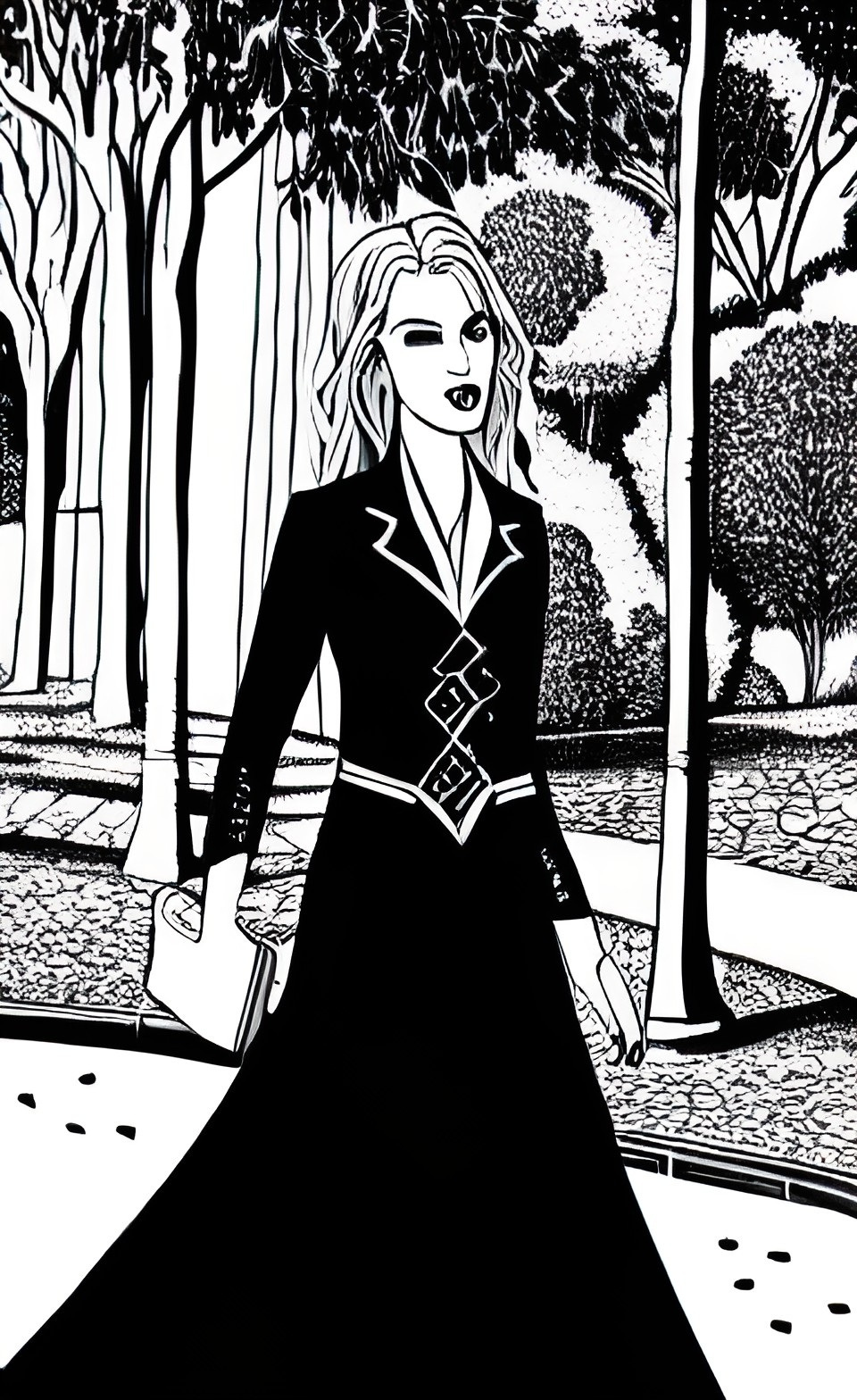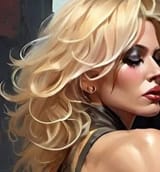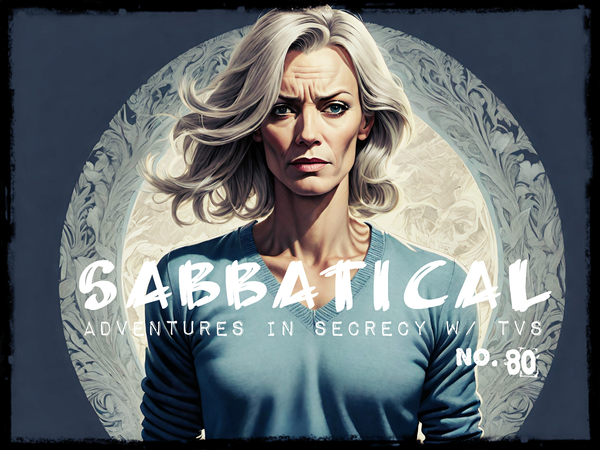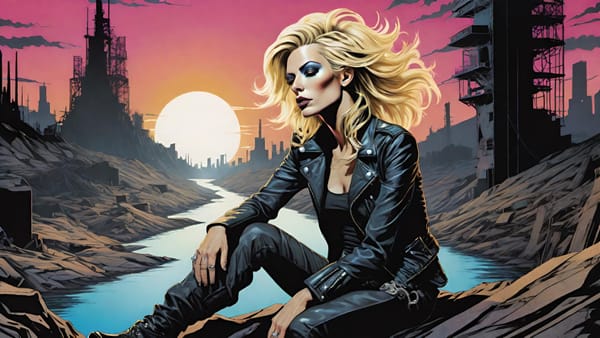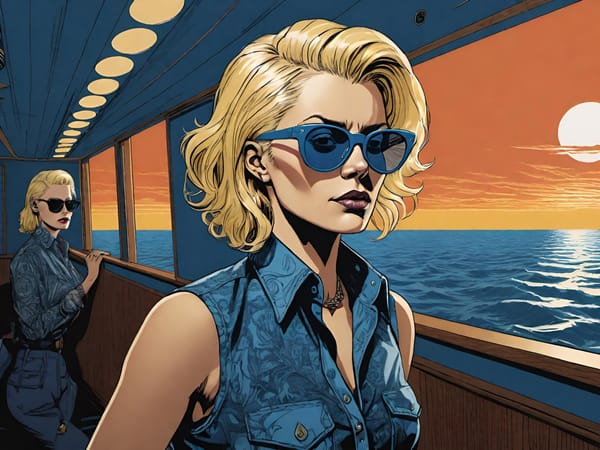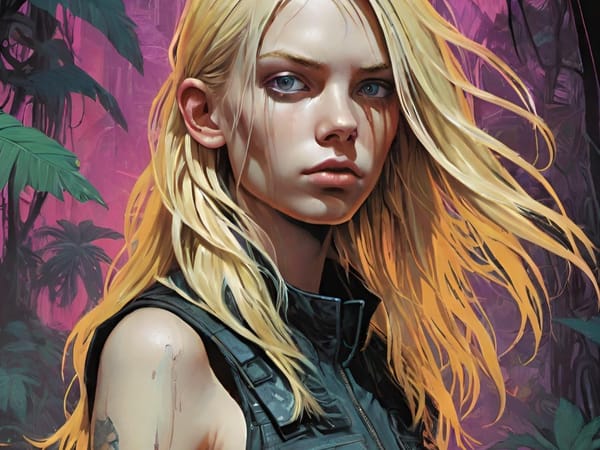The Front Matter
Day 2
You open the book, and you see the frontispiece. It’s a map overlaid on a person’s back. The map is stylized and not to scale, and its rendering has been blended with the portrait of a feminine face. Near the bottom of the map, what looks like a bay or estuary, there are words in script. You do not recognize the language and cannot read them.

Opposite the map page is the title page. The book’s title is given in English: TERESA’S BACKBONE. Below that is the author’s name: TERESA VAN SANTANA. Then there is a black and white ink drawing style image of a feminine person with long, light hair with a left side undercut and a back tattoo visible between their hair and a black strap on their left shoulder. You take this to be Teresa Van Santana; me. At the bottom of the page is the location of the publisher: RICHMOND—which you know to be Richmond, Virginia, not London. Finally, right under that, is the name of the publisher: THE VAN SANTANA LIMITED COMPANY, which is my publishing company.
The copyright page—aside from the standard Copyright © 2022 The Van Santana Limited Company—is otherwise blank, currently.
The next pages are for accolades. Right now, there are two accolades given:
“I definitely like the story the artwork is telling.”
—E. Michelle Peterson
“People who write books are on a different level than short story writers like me. You have my admiration and I have a lotta books....”
—xlntL
The dedication page is next.
On it is the following dedication, set in an italicized serif font: IMAGINE ME AND YOU.
You dimly recall a film by that title, but you haven’t seen it lately, or maybe not at all.
Following the dedication page is a provisional table of contents. It will change as you and I change, as our story unfolds.
It reads:
TABLE OF CONTENTS
I. Preface
II. Foreword
III. Prologue
IV. Teresa’s Body (the chapters)
V. Epilogue
VI. Afterword
VII. Postscript
VIII. Acknowledgements
IX. About T. Van Santana
X. Discussion questions
XI. Chronologies and timelines
XII. Endnotes
XIII. Glossary
XIV. Index
XV. Bibliography and reference list
You turn the page, and the next one is titled: PREFACE.
It reads:
There’s a new book to be written, but what would it be about?
Days—or shit, weeks maybe—earlier there was this idea that drifted into mah brain to use the scraps, the outtakes, from Everything Fails. But would this be a Secretsverse novel? Maybe not. In fact, the POV character hardly seemed like me anymore, which is probably why I cut the scenes out the first time. But then, in the world mythology, I’m still stuck on (or in or both) book 14, SOMA-2, and it would be lovely to get out of there and move along to book 15, especially seeing as how I’ve already started it …
But there’s also Azza-Jono. And people seem very confused about it—maybe about my work in general and how it all fits together.
And I’ve got a half-finished (charitably referred to as such) second Seven Worlds of Wizardry book, a couple outlines for more, and the first book is a complete mess. It’s super fun to use tarot cards to help write books, so maybe I could do that?
Which gave me the idea that I could lay out the spine of the novel from the beginning. This is something I was thinking about with SOMA-2 already, so.
The spine would be an outline, a table of contents, an illustration, a map for the reader-player to follow. And I add ‘player’ because even though it won’t be a proper choose-your-own story, it will certainly have interactive elements to it (we’ll figure those out as we go) and will have journaling and writing prompts and things. Possibly multiple endings, certainly multiple sequences, meaning you the reader can read it in different orders for a varied experience on reread. I know not a lot of folks reread books, but I like having that added value built in for those who do.
Maybe we could have some illustrations, too—which is totally doable thanks to the sinister magic powers of A.I.
And we could have a soundtrack. I always make a soundtrack that is what I’m listening to while I write; but we might need a second one for the finished novel. We’ll see.
Dreams often play a big part—especially in my early novels. So those will be here, too, but I’ll be more explicit about it so you the reader doesn’t get so confused.
Also, I have this humongous list of story ideas and unfinished projects. While it would be insane and unkind to try to wrap them all into this book, perhaps we can arrange a tour of sorts, a walk through that graveyard or holding pen or archeological dig site or whatever it is.
Last, I often correspond with friends during these endeavors, so I may include some of that, depending upon how cringe it is. And even if it is, I may still summarize or narrate it.
So that’s where we’re starting. That’s what this book is about.
The next page is titled: FOREWORD.
It’s blank, I know, which is kind of embarrassing, but I’m hoping someone will write it for us soon. We can come back and fill it in then.
I squeeze your arm and tell you that it reminds me of scrapbooking and feels kind of intimate. You feel however you feel about it.
Next is the prologue, but it isn’t labeled as such. You grumble about that, and I say, Don’t be so stuffy about formatting. Be brave, remember?
It jumps right in:
There’s a murder mystery. Who killed Wendy Glass? That’s been hanging out since 2013 with some clues and big hints but no clear answer. Let’s find out this time.
There’s a revenge story. Don’t have that figured out just yet, but we’ll get there.
There’s a story of possession that, again, goes back to the beginning.
I look at you and say that I wrote a whole book about this called Be a Dark Horse! or A Ministry of Ignorance. You haven’t read it, so that doesn’t mean much or help you out with this. I quickly nod and say, I know I know, that’s why we’re going to spell it out this time. Keep reading.
The story is a set of interconnected narratives. One is about an evil forest spirit named Dwizaal who possesses teenagers in the nearby town. The second is about a teenager named Darien who is very depressed and some family friends think it’s the work of demons. Next is a story about a teenager named Teresa who does a lot of mushrooms and has eldritch experiences. And last is a tale of a walk-in, a spirit who inhabits the body of a still living person.
You pause reading and look up and say, This isn’t really a prologue. It’s more like an introduction or instructions or something like that.
I bat my pretty if somewhat wrinkled eyes at you and smile.
You sigh, and keep reading:
There is a noir story about a housewife in Richmond who gets swept up in a crime plot with a devilishly charming dude.
And there is a storyline about two people who learn how to play golf for the first time and start to change the world.
That one’s for re, I say, pointing at it with my navy-painted fingernail.
Who’s re? you ask, unless you already know, in which case you just nod. If you are re, you a genius, muthafucka.
The rest of the prologue goes:
You can use the map to follow certain plotlines, vibes, characters, and formats—or to skip the ones you’d rather not read (e.g., sex scenes, fight scenes, music reviews).
You turn the page and look at its blank backside, then ask, Is that it?
I nod and say, Yeah. I mean, so far.
You close the book and hand it back to me. I stuff it into my stylish brown leather bag, and hug you by the arm.
As we walk through the park, we notice a sweet looking woman with very long legs, a dark haired man in a stylish university coat, a cool looking person with razor cut hair, and then an open arch to a solitary garden.
This is our first stop, I say. Which way?
You tell me, and we walk over that way.
Day 2 of National Novel Writing Month 2022 and The Teresa Van Santāna Literary-Somatic Experience
